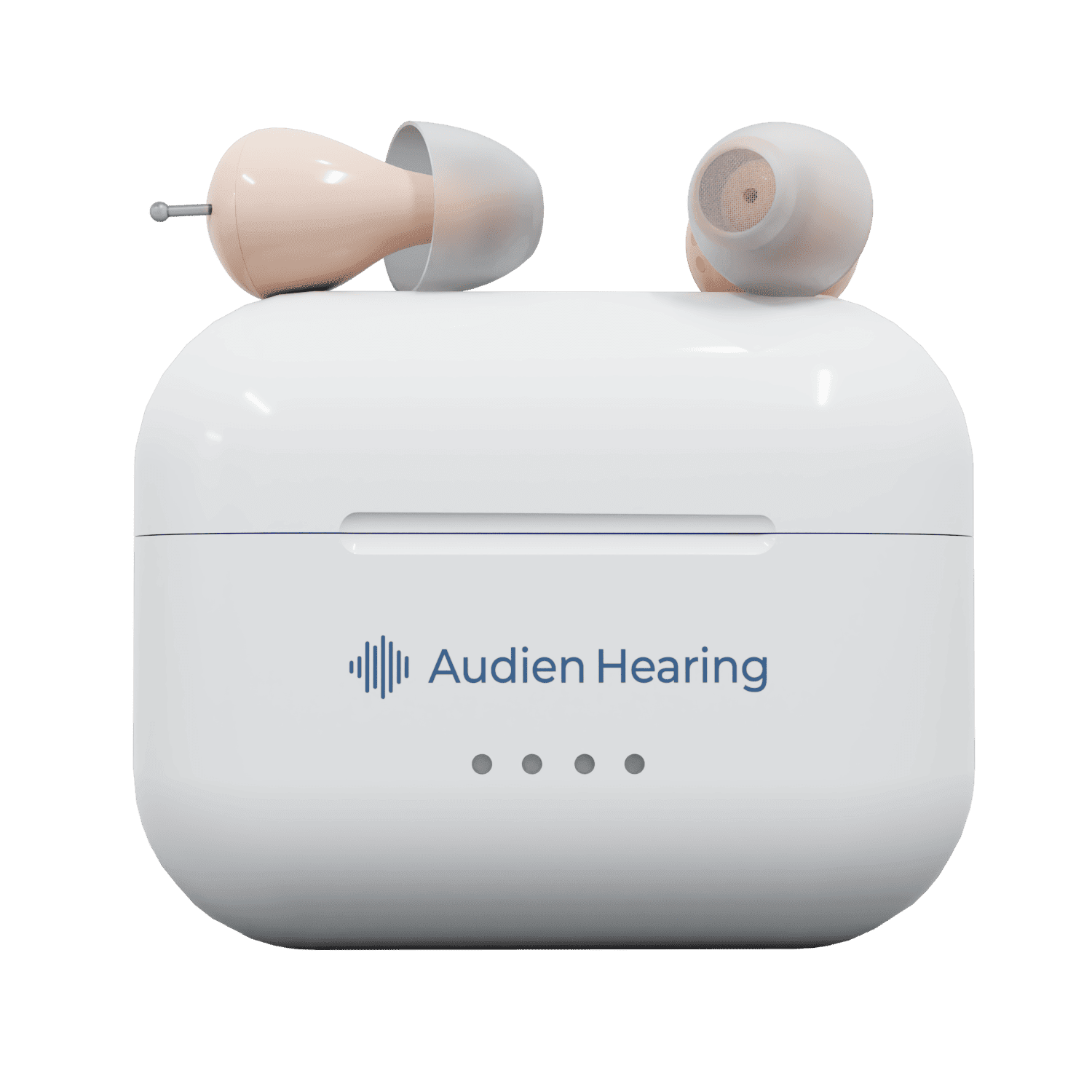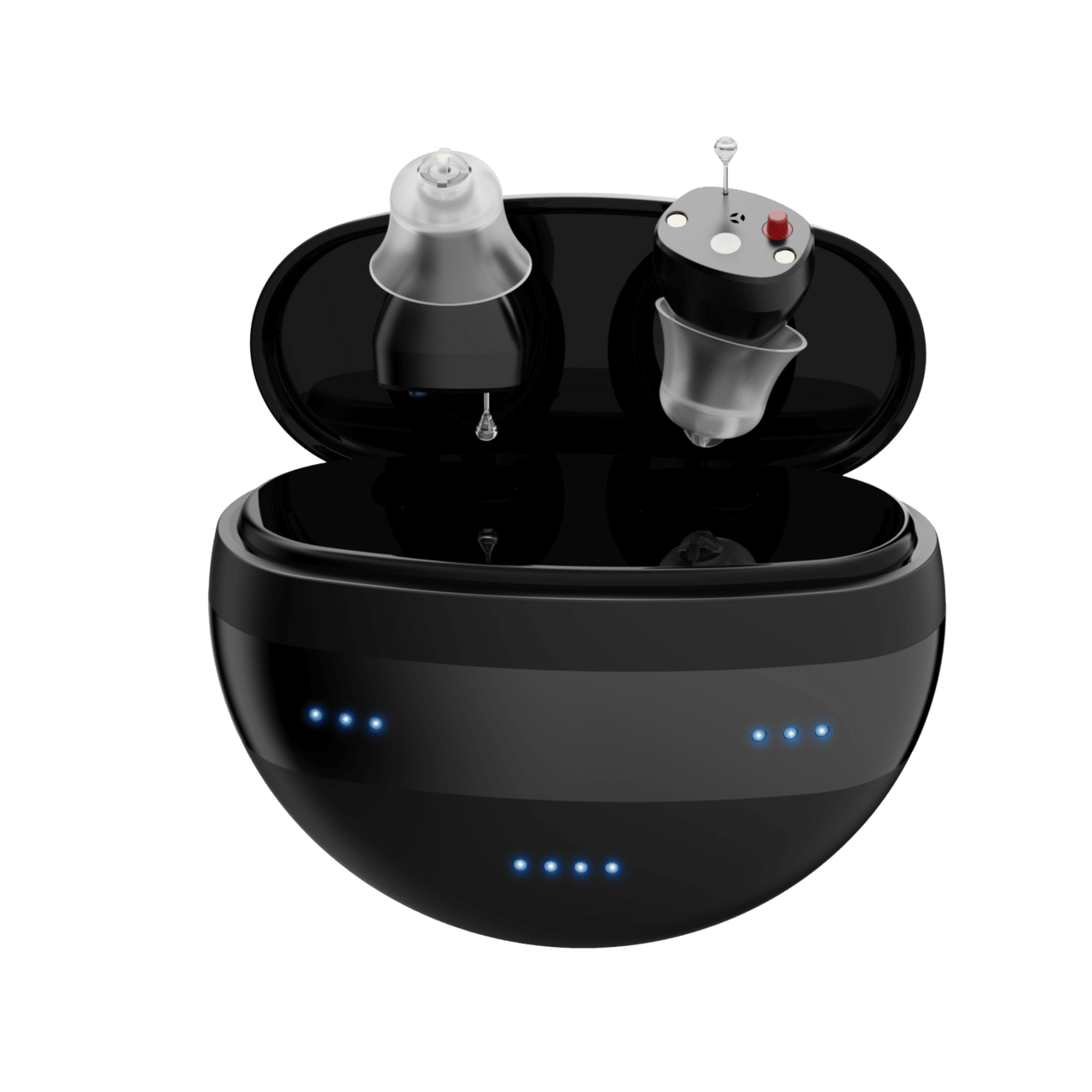


- Starting at just $98 a pair
- 45-day money-back guarantee
- Rechargeable & easy to use
- No prescription or hearing test required
- New Atom X! Touchscreen-controlled hearing aid, no app needed




- Nearly invisible, discreet, all-day comfort
- 100-day risk-free trial & 3-year warranty
- As low as $39/month, 0% APR financing available



- In-the-ear and behind-the-ear hearing aids
- 45-day free trial and money-back guarantee
- Sales on hearing aids starting at $297/pair



- Hear better, starting at just $99
- Simple to use, no doctor’s visit required
- Award-winning customer service



- No prescription required
- 20-hour battery life
- Try risk-free 45 days
.20210616085416.png)
.20210616085416.png)

- Behind-the-ear option for all-day comfort
- Live customer support
- $50 off any self-fitting OTC hearing aid



- Free online hearing test available
- All devices have rechargeable batteries
- 45-day risk-free trial



- Largest selection of hearing aids
- Nearly invisible design
- Proven results with medical-grade fitting



- Starting at just $98 a pair
- 45-day money-back guarantee
- Rechargeable & easy to use
- No prescription or hearing test required
- New Atom X! Touchscreen-controlled hearing aid, no app needed

Natural Intelligence does not provide medical advice, diagnosis, or treatment. If you think you may have a medical emergency, call your doctor or your local emergency number immediately.
What are the best hearing aids in 2025?
The best hearing aids in 2025 balance sound performance, comfort, feature set, and cost. For mild-to-moderate hearing loss, high-quality OTC or direct-to-consumer models can offer solid value for hearing aid prices between $200 and $1,500 per device. For more severe loss or complex needs, prescription hearing aids ranging $1,000-$3,500+ per ear remain the top choice. Always compare hearing aid price lists, trial periods, and service packages (e.g. Costco vs clinic).
How do hearing aids work?
Hearing aids are small electronic devices worn in or behind the ear. They consist of:
A microphone that captures sound waves
A processor/amplifier that converts sound to electrical signals, boosts, and filters them
A receiver (speaker) that delivers the sound into the ear canal
A power source (battery or rechargeable)
They help make soft sounds audible while keeping louder sounds comfortable. Modern devices also include features like noise cancellation, feedback suppression, and smartphone connectivity.
Different types of hearing aids (and visibility trade‑offs)
Your audiologist or hearing care provider will evaluate your hearing profile and recommend one of these common styles:
Behind-the-ear (BTE)
Larger, sits behind the ear, with sound delivered via tubing or wire. Good for severe losses, durable, and easier to handle.
Receiver-in-canal / receiver-in-ear (RIC / RITE / mBTE)
A slim housing behind the ear connects via a wire to a receiver in the canal. Less visible and often supports rechargeable batteries.
Completely-in-canal / invisible-in-canal (CIC / IIC)
Fits deep inside the ear canal, nearly invisible. Very discreet, but limited space for features, and harder to adjust.
In-the-ear / in-the-canal (ITE / ITC)
Sits in the outer ear or at the canal entrance. More space for features, easier to handle than CIC, but more visible.
Each style influences cost, feature availability, and usability for seniors or those with dexterity issues.
Why OTC hearing aids are a smart choice for affordable hearing support
Thanks to recent advances in technology and changes in regulation, over-the-counter hearing aids have become a practical, budget-friendly alternative for millions of Americans with mild to moderate hearing loss. These devices offer essential features - such as directional microphones, noise reduction, and smartphone connectivity - at a fraction of the cost of traditional prescription models. For many first-time users or seniors seeking an accessible solution, OTC hearing aids provide the flexibility to test, adjust, and use their devices independently, without the need for in-person appointments or fittings. By combining convenience with affordability, they empower individuals to take control of their hearing health on their own terms.
What to consider before buying a hearing aid (for OTC and budget-conscious buyers)
Choosing an over-the-counter (OTC) or budget-friendly hearing aid doesn't mean compromising on quality - it just requires smart decision-making. Below are key points to help you find the right balance between cost, comfort, and performance without relying on in-clinic visits.
1. Self-administered hearing test tools
While professional hearing tests are ideal, many OTC hearing aid providers now include access to online hearing screening tools. These can be done at home with headphones and give you a general sense of your hearing range. They're not a substitute for a full diagnostic exam, but are often sufficient to match you with an appropriate OTC device for mild to moderate hearing loss.
Look for FDA-compliant self-assessment tools
Repeat the test in a quiet room for the best accuracy
Use results to guide selection of features (e.g., noise control, amplification strength)
2. Understanding hearing aid prices and what they include
Hearing aids and prices vary widely, especially in the OTC segment. While clinic-based models often run into thousands of dollars, affordable hearing aids for seniors or first-time buyers are now available at far more accessible price points.
Basic OTC models start around $200 and can go up to $1,500, depending on features
Avoid assumptions—low price doesn't always mean low quality, but it may mean fewer features
Review the full hearing aid price list: device cost, charging accessories, and replacement parts
Understand if setup support, sound calibration, or customer service is included
Always look for transparent pricing so you can make clear comparisons between models and providers.
3. Bundled vs standalone services
OTC providers may bundle extra services like setup assistance, online consultations, or warranty coverage into the price, or they may charge separately for them. Understanding whether you’re paying for a fully bundled package or à la carte services helps make accurate hearing aid price comparisons.
Check if remote tuning support is included
Some models offer optional add-ons like mobile apps or cleaning tools
Be clear on what you're paying for upfront to avoid surprises later
4. Trial periods and return policies
Since you won’t always have access to professional guidance, a risk-free trial period is especially important. This gives you time to test comfort, sound clarity, and real-world performance before committing.
Look for at least a 30- to 60-day trial period
Understand the return policy and any restocking fees
Confirm whether refunds are full or partial
Trying your hearing aid in different environments—home, public places, noisy rooms—during this period is key to finding the right match.
5. Features and accessories that matter
Even affordable hearing aids now offer impressive features thanks to digital advancements. Prioritise features that directly improve daily use and avoid paying for extras you don’t need.
Core features to consider:
Directional microphones - better focus on speech in noisy settings
Noise reduction/cancellation - reduces background or wind noise
Rechargeable batteries - avoid frequent battery changes
Bluetooth connectivity - stream calls or audio from smartphones
Telecoils - useful for assistive listening systems in public spaces
Also check which accessories come with your device: eartips, cleaning tools, or travel cases can add to long-term comfort and value.
Pros and cons of affordable hearing aids
Pros
Lower hearing aid prices - better access for more people
No appointment needed - shop and compare at home
Good enough for mild to moderate loss
Modern features at a fraction of the cost
Cons
Less customisation - may not suit unique or severe hearing profiles
Fewer aftercare options - support may be remote or limited to online resources
These trade-offs are often acceptable for those prioritising affordability and independence.
Key takeaways
Finding the right hearing aid doesn’t have to be overwhelming or expensive. Today’s affordable OTC options offer a flexible, accessible way to improve your hearing without the need for prescriptions or high upfront costs. By understanding your needs, comparing features, and using trial periods wisely, you can choose a hearing aid that delivers both value and performance - on your terms.
Our Top 3 Picks
- 1Reasonable sound amplification at a great price
- Best for - Best for those on a budget
- Price range - $189-$299 a pair
- Trial period - 45 days
Free ShippingReasonable sound amplification at a great priceFree ShippingRead Audien ReviewAudien Hearing offers two main models of hearing aids, the Atom and Atom Pro, which are distinguished by their affordability, rechargeability, and simplicity. These devices are available with accessories like charging docks and are designed to offer a straightforward purchasing and usage experience without the need for medical prescriptions or visits to an audiologist.
Why we chose Audien: We chose to review Audien Hearing aids due to their unique position in the market as a low-cost, accessible option for those seeking basic hearing amplification without the added complexities and costs associated with more advanced hearing aids. Their one-size-fits-all approach and the lack of a need for custom fitting stand out as particularly advantageous for individuals looking for simple solutions or those entering the hearing aid market for the first time.
Audien Pros & Cons
PROS
Low pricingEasy to use and maintainRechargeableCONS
Could be uncomfortableAverage sound quality - 2

 Personalized via free audiology services
Personalized via free audiology services- Best for - Best hearing aids overall
- Price range - From $1,195 per pair
- Trial period - 100-day money-back guarantee, no risk
Personalized via free audiology servicesRead Jabra Enhance ReviewJabra Enhance offers clinic-quality hearing aids and licensed audiology services at a price 50% less than prescription hearing aids. Their hearing aids are the exact same underlying hardware and technology as a number of prescription models sold in clinics. There are three rechargeable models available, with excellent sound quality, speech clarity, and noise reduction, so you can hear your best. Plus, they feature the latest in connectivity with Android & iOS hands-free calls, TapControl, and Bluetooth LE Audio & Auracast (with compatible phones).
One standout here is the level of ongoing support that’s available. When you choose Jabra Enhance, you're not just getting hearing aids - you're getting a virtual audiology clinic. The licensed US-based Jabra Enhance Audiology Team uses clinical software to professionally program your hearing aids based on your audiogram or online hearing test. They are available 7 days a week for unlimited adjustments and appointments over your first 3 years. In addition, you also get a 3-year warranty, 3-year loss & damage, and lifetime technical support from their customer support team. There’s a great selection of accessories to take your hearing to the next level. Plus, an easy-to-use mobile app to control hearing aid settings and optimize sound for different environments, and a range of other features that make Jabra Enhance stand out as one of the best hearing aid providers we’ve seen. No wonder over 91% of their customers report hearing better!
Jabra Enhance Pros & Cons
PROS
Great personalized, clinic-quality hearing aids3-year warranty and 3-year loss & damageFree audiology services & lifetime technical supportCONS
More expensive compared to some alternativesHearing test required to custom-program before purchase - 3

 Affordable, basic behind-the-ear aids
Affordable, basic behind-the-ear aids- Best for - Best for mild to moderate hearing loss in adults
- Price range - $400-1200
- Trial period - 45 days
Affordable, basic behind-the-ear aidsRead MDHearing ReviewMDHearingAid sells simple behind-the-ear hearing aids for adults with mild to moderate hearing loss. These devices are easy to use and come factory-set with four sound profiles. Three models are available, ranging from the basic Air at $400, to a smartphone-enabled Core model for $1200. The rechargeable $600 Volt+ model does not have smartphone capabilities.
The company provides a free hearing screening through their website, as well as in-house audiologist reviews of hearing tests, to help you decide if their hearing aids are appropriate for your level of hearing loss. After ordering your hearing aids, you have a 45-day return period and a 90-day warranty.
MDHearing Pros & Cons
PROS
Extremely affordableSimple, easy-to-useCompany provides free online hearing screeningCONS
Lacks fancier features of costlier brandsSmartphone-enabled model is not rechargeable


.20210616085718.png)